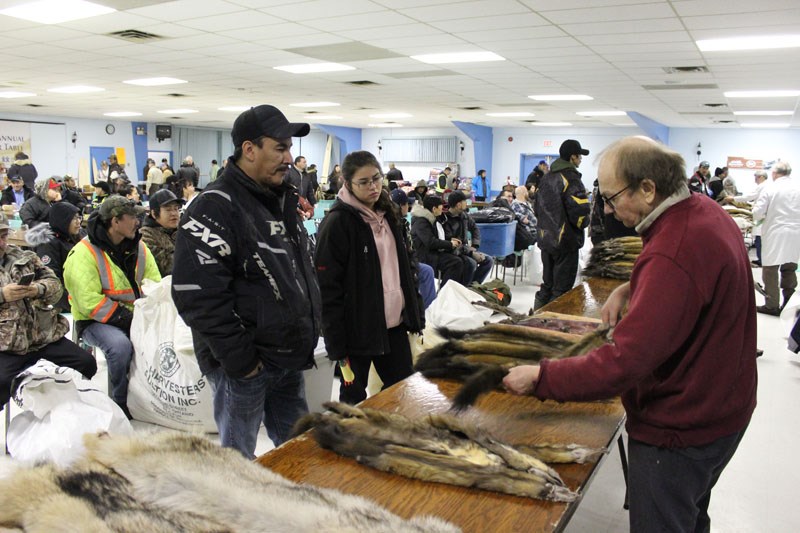While the atmosphere surrounding the 38th annual Thompson fur table was shrouded in uncertainty about the viability of the industry, the trappers who showed up still managed to get paid.
Taking place at St. Joseph's Ukrainian Catholic Church Dec. 15-16, this year’s event attracted 141 trappers who collectively received $348,000 for their furs.
While this amount is more than double last year’s take, it still pales in comparison to the $683,559 that was pocketed back in 2012.
The floor was still buzzing with activity on Friday morning, as trappers from all over Northern Manitoba—including Lac Brochet, Lynn Lake and South Indian Lake—attempted to find the highest bidder for their furs.
Friday’s festivities also featured conservation officers, equipment salesmen and retired trappers like Phillip Bighetty, who received a lifetime achievement award from the event’s organizers, the Manitoba Trappers Association.
Additionally, this crowd included Thompson deputy mayor Colleen Smook, who told the Nickel Belt News that this annual tradition serves a broader economic purpose, since a lot of the money pocketed by these trappers goes right back into the local community.
“When they come into town they sell their furs, then they buy their Christmas presents, their groceries,” she said. “It definitely has a very big economic impact, especially right here in Thompson.”
Having attended the Thompson fur table for around 25 years, Smook did admit that the fur trapping industry isn’t what it used to be, and has mostly been relegated to a profitable side project as opposed to a full-time job.
“This crowd today, compared to what it would have been five years ago, it’s about half the people,” she said. “Even the interest in trapping, it’s more of hobby now. There’s not too many people that can afford it just for their own income and their business, because it’s so expensive.”
While there are plenty of reasons why this change has taken hold—including fluctuating fur prices, increased cost of living and competition from overseas markets—former trapper Ivan Cook pointed to the fact that the weather is becoming increasingly unpredictable and is making the job much harder.
“You don’t know what the seasons are going to be like,” said Cook, who is from Lac Brochet and started trapping when he was 14 years old. “This year, the cold weather didn’t move in as anticipated to freeze the muskegs and the lakes. The snow just came in and everybody had to deal with slush.”
Even though Cook stepped away from full-time trapping in 1996, he’s still involved in the industry through selling hunting equipment and continues to share a fondness for the lifestyle.
After witnessing a bunch of young faces at this year’s fur table event, Cook maintains the hope that fur prices will go up in the future so that this tradition can continue to be passed down from generation to generation.
“As long as the fur market is open we will continue to see these trappers here every year.”




